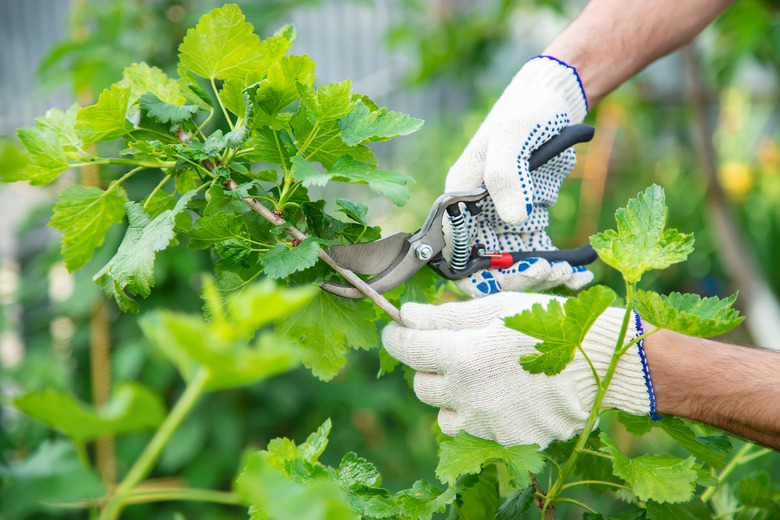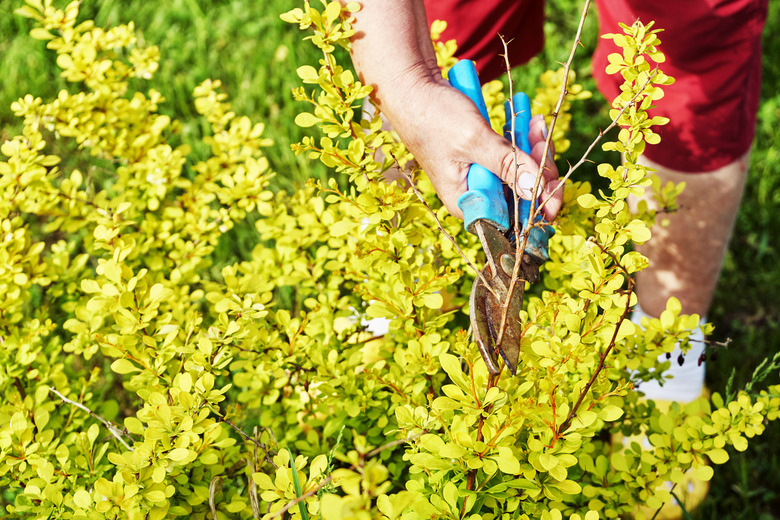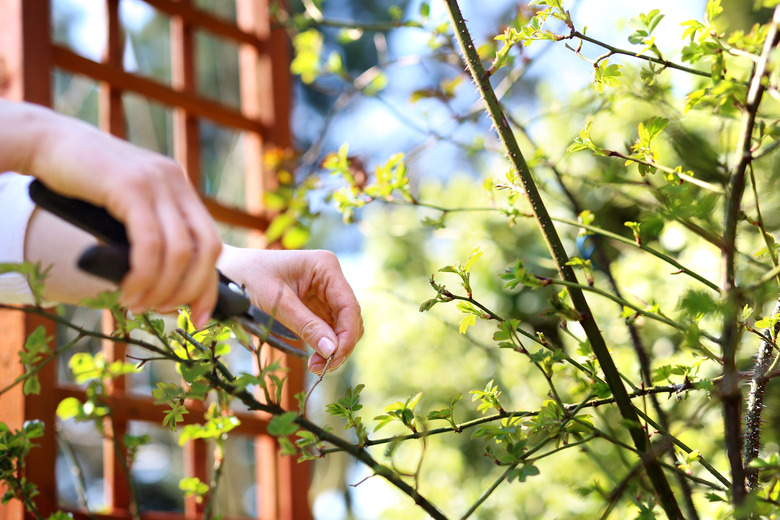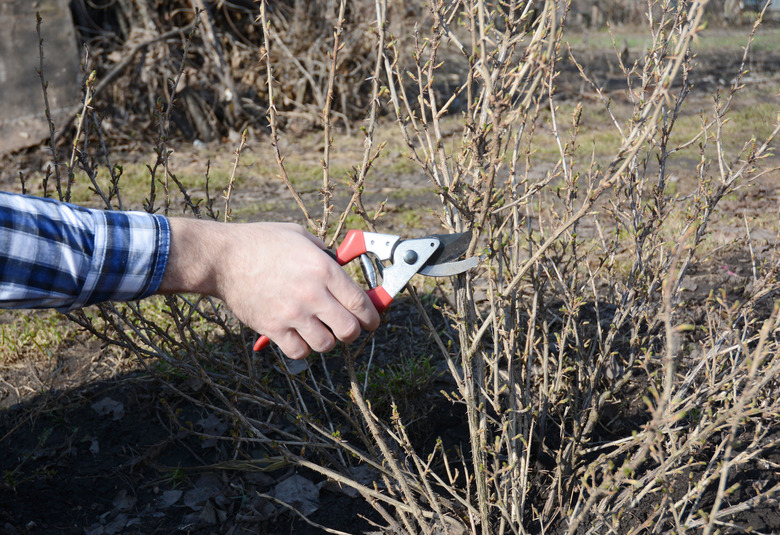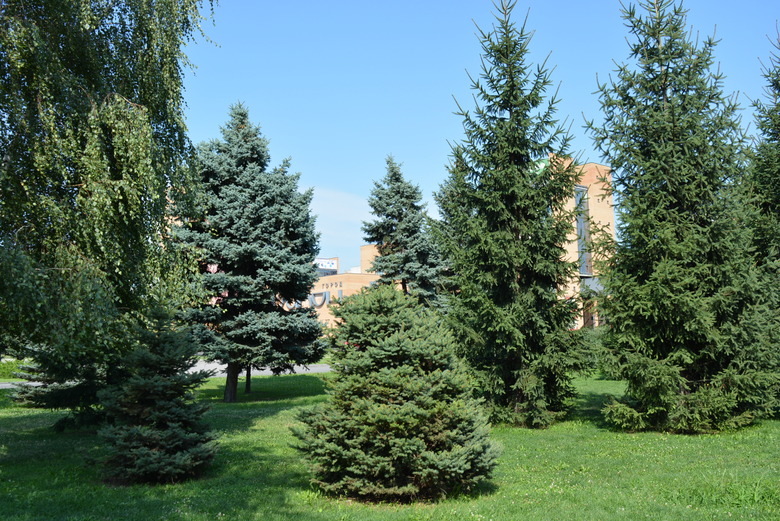Pruning Shrubs: What You Should Know
Most woody landscape plants require periodic pruning, and there can be a varieties of reasons why it needs to be done. Your reason for pruning may be aesthetic. You may be interested in shaping a hedge or other shrub plant to conform to your landscape or serve a particular purpose. Or, you may want to encourage flowering and make the shrub more attractive. On the other hand, another important reason for pruning a shrub is to improve its health by removing deadwood and diseased branches.
Basic Pruning Guidelines
Basic Pruning Guidelines
Every shrub species has its own idiosyncratic growth habits and needs unique care, but there are a few general pruning guidelines you should know. When done correctly, pruning can help a stressed or diseased shrub recover, it helps a healthy one stay that way, and it can make a showy bush that much more impressive. The pruning method you use and the time of year you do the pruning will vary, depending on the reason you are doing the pruning, as well as the growing characteristics of the shrub.
By definition, pruning involves a reduction in size, but this is a temporary effect, because cutting back a shrub always stimulates new growth. You can safely remove about one third of the plant's total growth without harming the plant. To ensure a healthy response from the plant, it's important to use sharp tools and to keep them clean so you don't inadvertently spread disease from one plant to another. A good way to do this is to rub down your tools with alcohol or mouthwash before each use.
Tip
Avoid cleaning your tools with Pine-Sol or products that contain bleach. They are corrosive and cause damage to the plant.
Heading and Thinning Cuts on Decidous Shrubs
Heading and Thinning Cuts on Decidous Shrubs
Whether you're pruning to shape a deciduous shrub, encourage flowering, or to rejuvenate the plant by removing dead, diseased or overly dense growth, you'll use one of two types of pruning cuts—heading and thinning. Rejuvenating an old deciduous shrub by cutting all its branches almost to ground level is an exception. This drastic procedure, called hard-pruning, forces the shrub to produce entirely new growth, although it will probably take several years to fully recover.
Use heading cuts to remove the outermost growth from a branch when your intention is to increase the density of a shrub by or increase the flower yield. Heading allows the plant to redistribute the nutrition it sucks up from the roots, and the result is invigorated growth.
- Unless you're trimming a hedge with hedge clippers, be selective about heading cuts. These cuts always stimulates new growth, and if you make them indiscriminately, the shrub will grow out of control.
- Make heading cuts about 1/4 inch from the nearest bud that remains on the branch. New growth will emerge in the direction the bud is facing.
- Slope the cut about 30 degrees down toward the opposite side of the branch; or better yet, make a completely straight cut to minimize the size of the wound. If the cut is too steep, the bud may dry out and die.
Use thinning cuts when performing maintenance on a shrub. Thinning cuts remove deadwood and diseased branches and reduce the density of the shrub without stimulating regrowth. These pruning cuts typically remove entire branches down to ground level or to a major parent branch.
- Use pruning shears, loppers or a saw, depending on the diameter of the wood.
- Cut as close to the parent branch as possible, preferably just above a bud node on the branch you are removing.
- Angle the cut slightly to prevent the node from drawing water from the parent branch, thus forcing it to dry out.
Tip
Most pruning wounds are self-healing and do not require wound dressing.
The Best Time of Year for Pruning Deciduous Shrubs
The Best Time of Year for Pruning Deciduous Shrubs
Spring is the best time of year for heading a shrub, but whether you should do it in early or late spring depends on the shrub. Those that produce flowers on new shoots should be pruned in the early spring as soon as growth has started. This gives the shrub time to produce new shoots, and since the flowers generally appear late in the season, there should be still plenty of them. Some examples of such new wood shrubs are:
- Roses (Rosa spp.)
- Panicled hydrangea (Hydrangea paniculata)
- Butterfly bush (Buddleia davidii)
- Nandina (Nandina domestica)
Old wood shrubs produce flowers on existing branches, wood that was created in previous years of growth. Since these flowers typically occur in early spring, it's best to hold off on pruning until immediately after they have fallen. Don't wait too long, though, or the plant won't have time to recover for the following year's bloom. Some examples of old wood shrubs include:
- Witch hazel (Hamamelis)
- Flowering quince (Chaenomeles)
- Forsythia (Forsythia spp.)
- Lilac (Syringa vulgaris)
You can do most other pruning, especially removal of dead and diseased branches, at any time of year, especially when the plant is stressed by overgrowth or is growing in an unhealthy way.
- The best time of year for thinning is in the late winter before spring growth as started.
- The most disruptive time of year for most shrubs is late spring, when the plant is pumping energy into new growth.
Maintenance and Rejuvenation Pruning Techniques
Maintenance and Rejuvenation Pruning Techniques
Deciduous shrubs need yearly maintenance to keep them healthy and looking their best. When removing dead or diseased branches, make the cut in healthy wood, ensuring that the damaged part of the branch is entirely removed. Other thinning procedures depend on the growth habit of the shrub.
- Cane-style shrubs: With this type of shrub, canes extend upward from a common root. Reduce the height of such a shrub by cutting the tallest canes at or near ground level. Reduce shrub density by thinning branches on the remaining canes that block light in the center of the shrub or crowd out other branches. Roses and forsythia are examples of cane-style shrubs.
- Mounding-style shrubs: To thin shrubs with growth that originates from a common center, make the cuts well inside the mound where they won't be visible. Take the longest branches first. You can reduce the total mass of the shrub by one third without damaging it. Azalea and spirea are examples of mounding-style shrubs.
- Tree-style shrubs: Some shrubs are like trees, with a growth habit that sends branches growing outward from a central trunk. To thin these, start by removing branches that grow together or in the direction of the trunk, rather than away from it. Thin the upper branches to open up the center of the shrub and allow light to get in. Remove suckers, which are branches that originate near the base of the trunk, as well as any branches that touch the ground. Serviceberry, witchhazel, and dwarf magnolia are some examples of tree-style shrubs.
Rejuvenation pruning, also known as hard pruning, is a technique to revitalize an old shrub that has seen better days. You cut the entire shrub back to within 6 inches of the ground, which allows it to sprout entirely new growth. The best time to do this is at the end of the dormancy period in late winter. You'll probably have to wait a few years for the new growth to fill out and the shrub to occupy its former position in the landscape.
Pruning Coniferous Shrubs
Pruning Coniferous Shrubs
Many coniferous shrubs typically grown in a conical pattern and are known for requiring less maintenance than deciduous shrubs. Sometimes, however, abnormal growth or other considerations require the removal of one or more branches to make the shrub healthier or train it to grow in a way that fits better with the landscape. This should be done carefully, because confers don't recover from pruning as well as deciduous shrubs.
If you hard-prune a shrub to a certain shape, it will tend to retain that shape and it won't fill out or grow back, and if you cut it back to the stump, it won't regrow at all. Because conifers don't regrow as easily as deciduous shrubs, there is no reason to prune one to revitalize it.
You may want to fine-tune the shape of a coniferous bush by removing needles that are bunching together on the tips of the branches. It's usually best to do this in late spring, although the exact timing depends on the species. Cut off new growth only; if you go back to old wood, the branch won't produce new growth.
